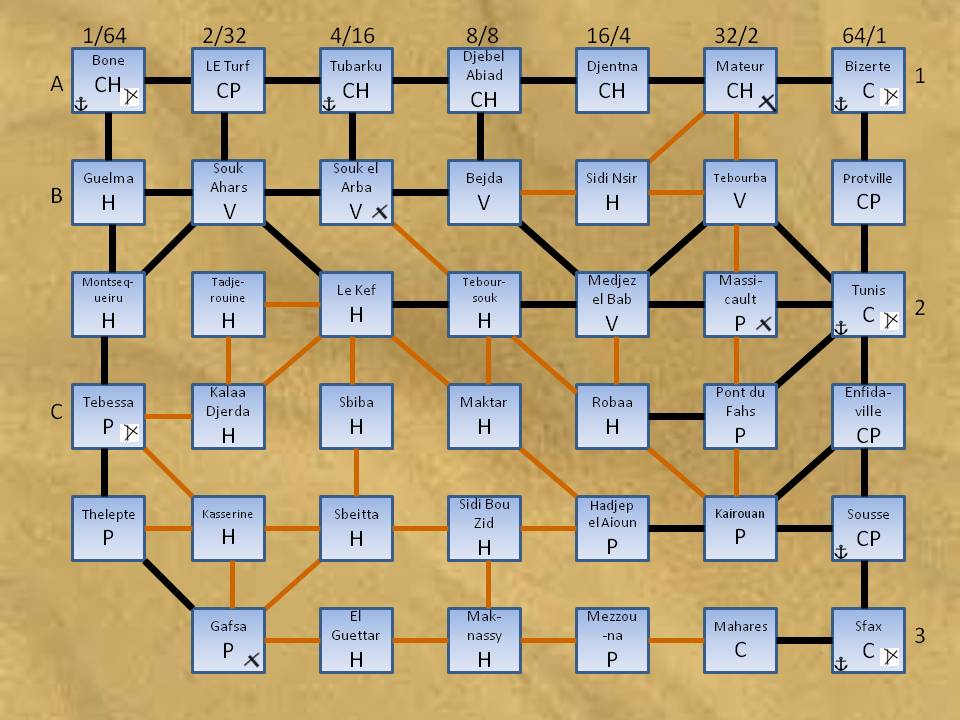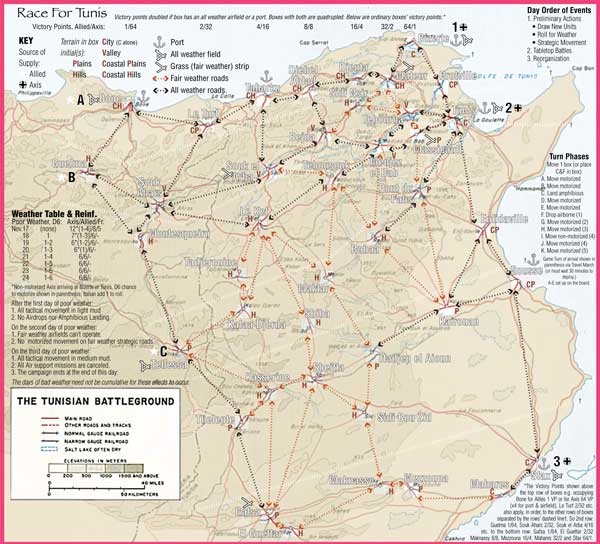The primary author, Greg Novak, makes a good case for Tunis as a good campaign series of games with his booklet as a: “framework for allowing players to run a series of low density CD games which are linked together. The Race to Tunis allows players to do that at an interesting time point in WWII when the odds were fairly equal and with a troop mix that allows for some surprises on both sides. Since ammo loads are limited, and troop density is low, there is an incentive to not throw troops away nor burn ammunition recklessly.”
I have a printed copy of this Command Decision 3 campaign made by Frank Chadwick, Greg Novak, John Holtz and Tom Harris (68 pages), but I cannot find whether it is still available printed in any form (originally printed in comb-binder format). The cover is shown above. Note that the campaign could probably work for any version of CD. Since Tom Harris’ web page is not accessible as of 22SEP2020, here’s how to download the PDF:

When I was a young person, one had to go to library to check out a copy of the US Army’s WWII green books. Did you know that you could get a free PDF copy of this book? Just click below: (About 50 Megabytes, 786 pages)
So using the US Army’s map, I added features so you could see the same grid of boxes in their right locations (white squares), then added some of the charts and other info. Using this you get a hint of the terrain (like road entry points) so that you need not just use a random terrain system as Greg proposed to make the game tables.

The image of the map above is a grainy web version so if you want to download a sharper version click below (6.8 MB):
Let me know if you typos or unclear bits. The key difference is that the “rows” on Greg’s grid-like map are not as obvious on my map. So I added dashed white lines to clarify the rows and after that it becomes easy to see which boxes proceed west-to-east. This matters because of how the Victory Points are awarded and so I describe that at lower right on the map.
Still “too big” a campaign?
The campaign could involves a subset of 90 battalions (never all and some might be recycled). This perhaps is nearly a thousand stands in Command Decision.
CD3 is a platoon-per-stand game, the OB, and I found it in Tom’s Appendix webpage which is inaccessible right now. A summary is found at the bottom of this section.
Greg’s commentary points out that if you didn’t have enough troops, you could drop the lower row(s) of the battle boxes. The 4th edition of CD, Test of Battle, might have a bit fewer stands.
CD3 has 3 times as many units by definition as a company-per stand game like Great Battles of WWII or Rommel. So the CD3 OB it could be helpful in constructing a GBoWWII or Rommel OB. The campaign has 90 battalions so to represent them all that implies about 270 company stands of troops—still a big number. But that could be fudged by having the same box troops represent more than one battalion! Just change the Title and all identical versions can’t be in play at once.
Greg suggested using cigar boxes to store the troops in and the contents not shown on the box—so that they get assigned in a random manner effectively. Of course one could rearrange into Regimental boxes instead and thus need only 30 such boxes… 15 per side.
Or use a Battalion-Per-Stand sort of game, then you’d be ready with just 90 stands total
racefortunis-excerpt-without-detailed-obsDownload

